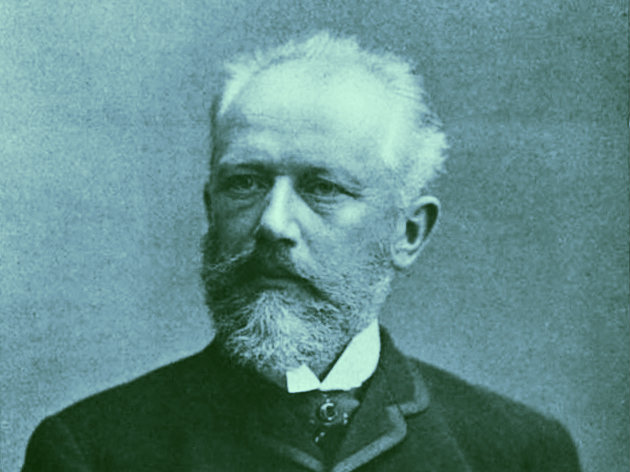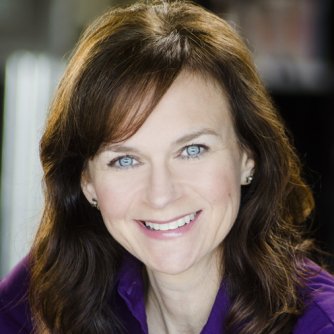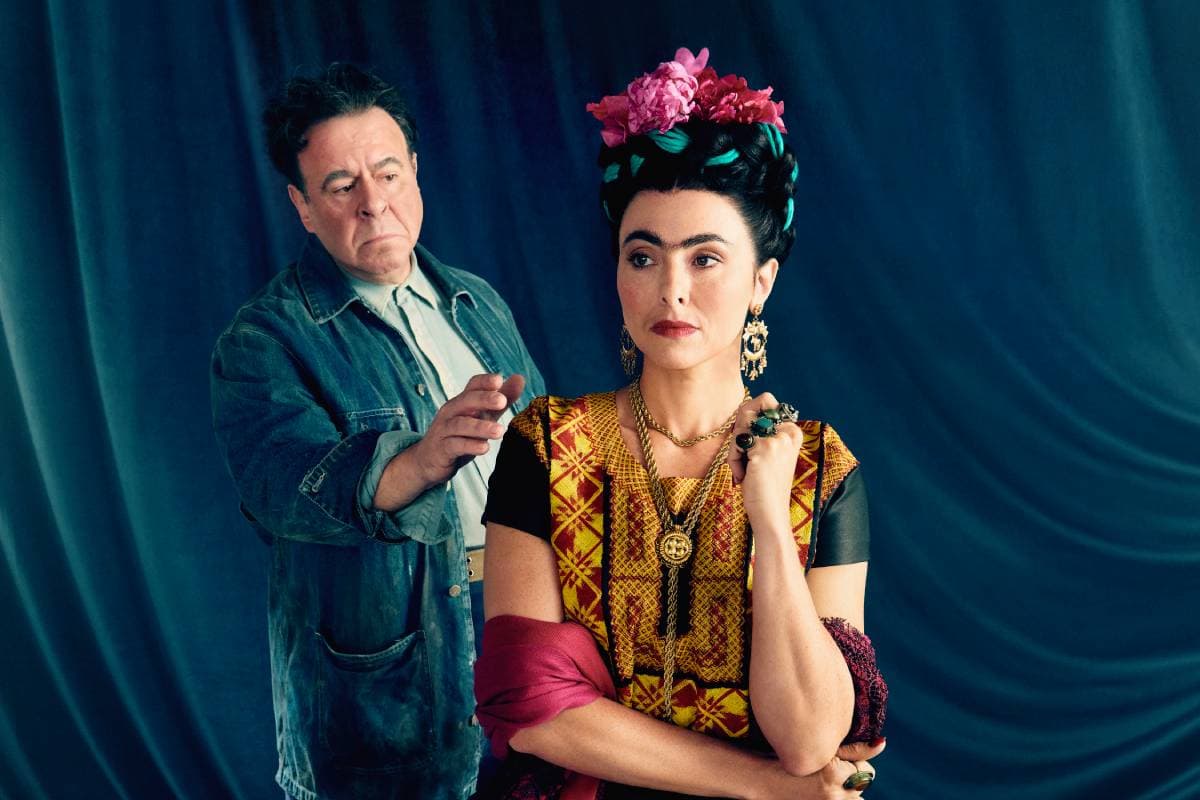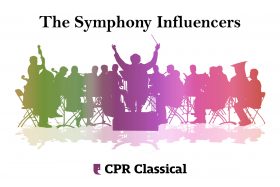
The symphony lives at the core of classical music. CPR Classical focuses on the robust 150 year period when key composers created the foundational architecture of the symphony.
What is a symphony and how did it come into being?
The symphony is both an ensemble and musical form. Its origins lie in numerous historic paths over nearly 400 years. Its story is an awesome, living testament to human creativity and passion. Over time, it blossomed into something ever larger and more exciting. Ludwig van Beethoven’s Symphony No. 9 (“Ode to Joy”), Hector Berlioz’s Symphonie Fantastique or any of Gustav Mahler’s symphonic monuments stand as overwhelming examples that fill concert halls today - when there isn’t a pandemic.
There was something of a precedent for the grandeur, intensity and sheer volume of these works in Europe’s ancient cathedrals, which served as a magnificent amplifier of music, as well as the home of serious music-making for centuries. Ensembles - mostly choral - never needed to be large to be heard clearly within those reverberating, tall stone walls. And of course there was the gigantic sound of the pipe organ, especially notable when master Johann Sebastian Bach was in the saddle!
Music’s powercenter slowly moved from sacred to secular, where opera and various forms of music across Europe had long been brewing outside church walls. Opening opera sinfonias (overtures) and Baroque styles played a critical role in the symphony’s evolution, until it settled into a more definitive form in the hands of Bohemian composer Johann Stamitz. It is Joseph Haydn, however, who first radically grew the symphony in size and scope, cleverly leveraged the four-movement structure (roughly: fast-slow-medium-fast), and raised the volume to an intensity previously unmatched outside of those imposing sounds of the cathedral. From there, the foundation was laid for an amazing run of exciting advances and invention within the symphony that would continue for another century. Gustav Mahler was the last great symphonist to substantially alter the DNA of the symphony, expanding it to massive proportions. Mahler wrote to a friend about his colossal Symphony No. 8 (“Symphony of 1000” - yes, 1,000 orchestra members and choristers!), “Imagine that the whole universe begins to vibrate and resound.”
Since Mahler, there have been master symphonists like Jean Sibelius and Dmitri Shostakovich, and those who have broken through barriers of racial and sexual discrimination like William Grant Still, Amy Beach and Florence Price. For these and many more, the symphony continues to serve as a powerful platform through which composers wield their influence and express their art and talents on a grander scale.
The Symphony Influencers: 1750-1900
Johann Stamitz (1717-1757): Stamitz wrote 58 symphonies and 10 orchestral trios. He was the first to add winds and consistently write symphonies in four movements: fast, slow, minuet and trio (a moderate dance), and a lively finale. We’ll call him the grandfather of the symphony.
Franz Joseph Haydn (1732-1809): Haydn is known as the father of the symphony partly because he wrote over a hundreds symphonies in a style that was accessible and popular. Haydn also expanded the orchestra’s instrumentation beyond Stamitz’s chamber style to look more like today’s orchestra, including trumpets and clarinets. Born in Austria to a working class family with a love of folk music, Haydn hit his stride working thirty years for the wealthy Esterházy family, running all musical and theatrical events and composing all of the music. Haydn was cloistered by contract, but word of his music and reputation got out, after which he became the most famous composer in Europe. He would spend summers at the beautiful Esterhazy Palace and the rest of the year in Vienna, where he was a friend and mentor of Mozart and tutor of a young Beethoven.
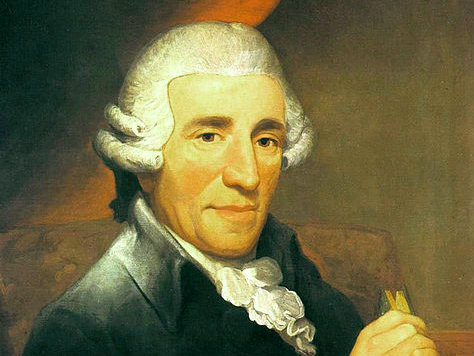
Composer Joseph Haydn.
Wolfgang Amadeus Mozart (1756-1791): It’s no surprise that Mozart makes the list: what classical musical styles didn’t he influence?! Audiences were already receptive to the symphony and to Mozart. His strategy was to write an attractive melody which he would then develop over the course of the symphony as it changed keys, and to introduce new themes for contrasting moods while recapping main themes. The audience was entertained with the game of recognizing melodies and techniques as the piece went by. He even referenced his own works to see if they’d catch on: for example, his Prague Symphony quotes his Marriage of Figaro because the opera was so popular in the Czech city.
Ludwig van Beethoven (1770-1827): Beethoven’s early works were mostly written in a more reserved, regimented style like the symphonists before him. However, in his Symphony No. 3 (the Eroica symphony), he moved beyond just plugging a musical idea into a series of movements. Rather, he captured intense emotion and tension as no one had done before. Beethoven’s 3rd symphony is commonly seen as the beginning of the musical Romantic movement. If his 3rd symphony was innovative, Beethoven’s 9th symphony was groundbreaking: with the inclusion of a choir, more wind instruments, multiple musical styles (march, fugue, etc.), and the emotional heft of the work, Beethoven ushered in the Romantic period and set a new bar, creating what was later coined “the curse of the 9th” because of the many composers who followed and never got beyond nine symphonies.
Franz Schubert (1797-1828): Schubert’s symphonies expanded the role of the brass, and moved into new musical territory with more complex chords. By the time Schubert was writing his symphonies, Beethoven’s were already famous, and that moody influence will be heard in many of the upcoming composers, including Schubert. The fluid lyricism in all of Schubert’s work allowed his symphonies an emotional depth which still captures audiences today.
Felix Mendelssohn (1809-1847): Felix Mendelssohn is well known for his poetic, sentimental style, highlighted in his two major symphonies No. 3: Scottish and No. 4: Italian. Mendelssohn was old-school: he loved the old Classical style and rejected the “radical” composers of his time, like Wagner or Berlioz. Still, Mendelssohn’s own music is clearly Romantic, with delicate yet colorful orchestrations. His moody Scottish symphony, written on a trip to Scotland, is played without breaks between movements, which was a first, but his lively Italian symphony is the popular favorite, as it happily recounts a trip to Naples and Rome.
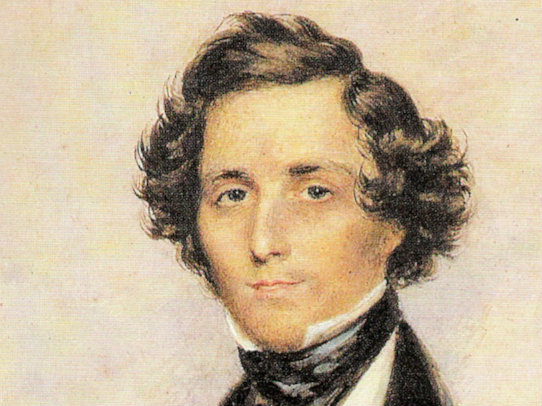
Robert Schumann (1810-1856): By his third symphony, Schumann was ready to switch things up with a five-movement work inspired by the Cologne Cathedral. In his Symphony No. 4, Schumann takes a page out of Mendelssohn’s book and presents each movement without pause, using a theme which is heard again and again throughout the piece, a “cyclic” idea which would be popular for many later Romantic composers.
Anton Bruckner (1824-1896): Bruckner followed the traditional structure, but within those conventions his orchestration exploded beyond what was done before. In the mid-20th century, musicologists realized something important: Bruckner’s orchestrations were modeled after his primary instrument, the pipe organ! Each of his symphonies is like a huge cathedral of sound, building like the sustained pedal tones of an organ. His enormous self-doubt helped to dampen his reputation, but his symphonies have been performed more often in recent years.
Johannes Brahms (1833-1897): Brahms composed some of the most rewarding, expressive symphonies we know and was as beloved in his time as he is today. He loved off-beat, dancing sorts of rhythms, which may have stemmed from his contact with Hungarian folk music in his youth. Brahms was a traditionalist, writing each of his symphonies in the Classical four-movement style. He revered Beethoven, Haydn, and Mozart, but his lush orchestrations were in line with the Romantic style.
Hector Berlioz (1803-1869): Until Berlioz, symphonies were mostly absolute music, meaning: without a narrative intent. Berlioz often composed with a literary program in mind: Shakespeare, for example. His famous Symphonie fantastique tells the semi-autobiographical story of an artist driven to self-destructive madness for the love of a beautiful woman, complete with a satanic dance! He was also the first major composer to write for what would now be considered a concert band, with string and voice parts added years later, in his Grandesymphonie funèbre et triomphale (Grand Funeral and Triumphant Symphony), a three-movement symphony.
Camille Saint-Saëns (1835-1921): Perhaps most famous for his opera Samson et Delilah, Saint-Saëns, like Berlioz, often composed on a theme, illustrating the story with notes instead of a paintbrush. His symphonic poems Carnival of the Animals or Danse macabre highlight this. Of Saint-Saëns’ five symphonies, his Symphony No. 3, the Organ Symphony,is the one that really stands out: not only does it include prominent organ and piano parts, but the four movements are divided into two halves, so the symphony is sort of in two mega-movements.
Antonín Dvořák (1841-1904): Dvořák was famous for infusing his works with native Bohemian folk songs, which he would work into his symphonies and embellish with lush orchestration. He was inspired by Brahms and Beethoven, and influenced by the operas of Wagner. His Symphony No. 9:From the New World is his most beloved work. Dvořák, the world’s most famous composer at the time, wrote the work while in the United States. American music still looked to Europe heading into the 20th century, but Dvořák introduced America to itself by suggesting African American spirituals and Native American tunes in this symphony.
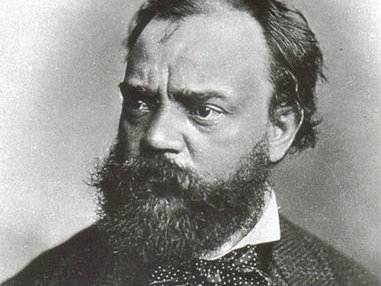
Jean Sibelius (1865-1957): Though his symphonies were somewhat reserved, they were not repetitive; Sibelius used lots of short melodies which weaved in and out of harmonic ambiguity, and audiences loved it. His Symphony No. 5 was notable for being in a major key when all of Sibelius’ other symphonies were in a minor key to reflect a darker nature (maybe those gloomy Scandinavian winters?) and his final symphony, No. 9, was unusual for being only one movement.
Gustav Mahler (1860-1911): Mahler let his orchestrations and his meaningful melodies speak for themselves, which took the symphony to new emotional heights. He stuck with a traditional symphonic form but drew inspiration from other Romantic composers (like Schumann’s cycling idea). With experience as a conductor, he knew what each instrument did best and used them all wisely. His music represented the cynicism and ache of personal tragedy (his cherished daughter, Maria, died from scarlet fever at age 4), but this was not fully appreciated until after his death.
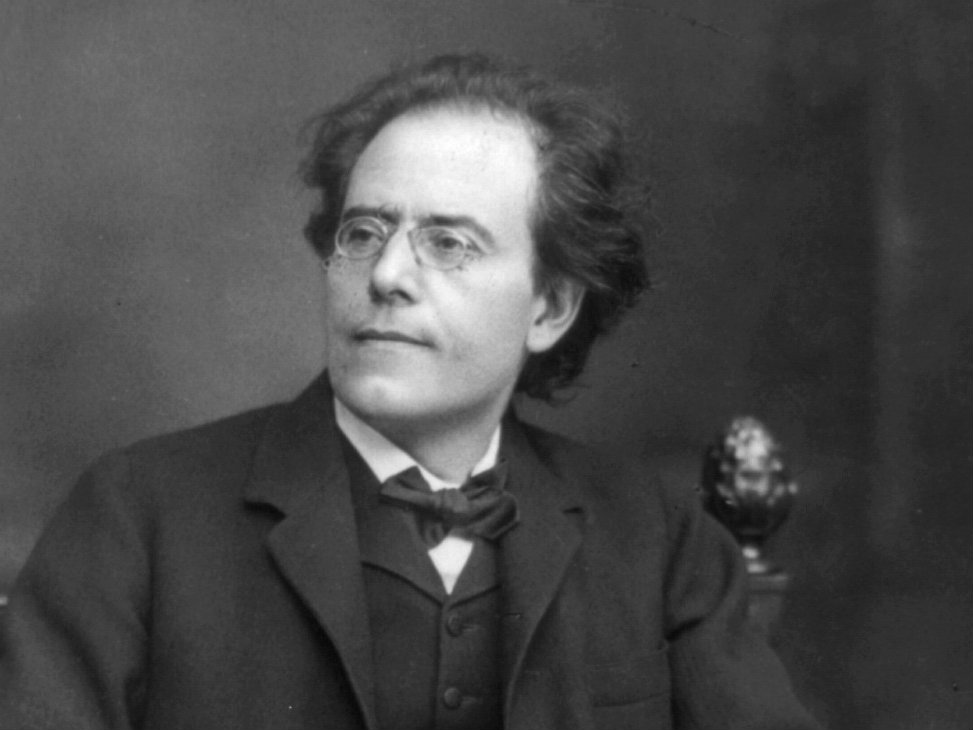
Sergei Rachmaninoff (1873-1943): Rachmaninoff’s three symphonies each represent a different period in his compositional life, and his Symphony No. 2 is the most popular. He had an almost impressionistic style, and was struck by religious chant (especially the Dies Irae) and his former studies of the fugue. Reception of the first symphony sent him spiraling into a deep depression. Hypnotherapy brought him back to composing. He emerged with a more rapturous style, first and famously with his Piano Concerto No. 2, but his music took a turn on a whole and the third symphony bookends the trilogy with nostalgic and truly beautiful melancholy writing, no doubt inspired by the political upheaval Rachmaninoff experienced in Russia.
Pytor Illyich Tchaikovsky (1840-1893): Russia’s best-known composer, Pytor Illyich Tchaikovsky navigated a slew of different musical styles in his symphonic writing- and he wrote a lot. He had to overcome the differences between Russian and Western classical music, but it was nothing compared to the personal challenges he faced. Scholars note that those personal struggles, whether with music critics or with living secretly as a gay man in 19th century Russia, come through in his music. He wrote music to elicit an audience reaction and his Symphony No. 6 is the most popular for the way it displays an overwhelming amount of human emotion.
